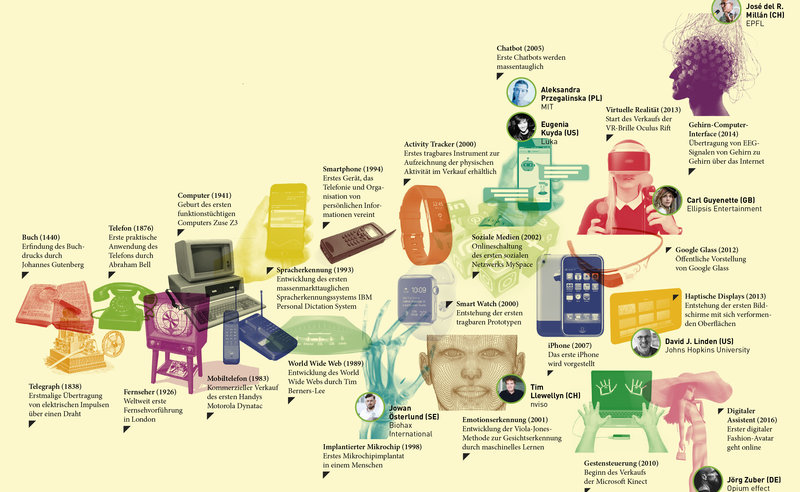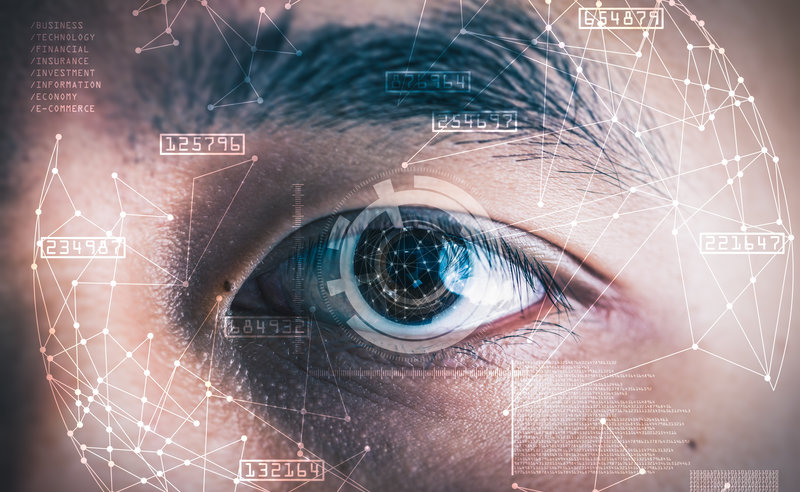 infografik-etd19_rz.pdf
infografik-etd19_rz.pdf
Kommunikation und Sprache wandeln sich konstant. Rückblickend lässt sich meist leicht sagen, welche Kommunikationsmittel die Entwicklung unserer Sprache beeinflusst haben. Das Buch, das Telefon, der Fernseher, der Computer, das Internet und das Smartphone führten zu derjenigen Ausdrucksweise, wie wir sie heute haben. Es folgten 3G, 4G, Tweets, Posts, Fake-News, :) und Filterbubbles. Jedes Medium, jede Schnittstelle verändert die Spielregeln für Kommunikation und Sprache.
Für die Zukunft ist noch nicht klar, welche Kommunikationsmittel ein ähnlich revolutionäres Potenzial haben wie die genannten Beispiele aus der Vergangenheit. In der Pipeline befinden sich aber einige: Wie beeinflusst die immer bessere Stimmerkennung von Computern die Kommunikation zwischen Mensch und Maschine? Lösen in die Hand implantierte Mikrochips bald Schlüssel und Kreditkarte ab? Was, wenn Bots zu unseren besten Freunden werden und wir Befehle direkt aus unserem Hirn an Maschinen übermitteln können? Und wird der Algorithmus letztlich gar zum neuen Alphabet? Unsere Kommunikation wird gerade mächtig zerstückelt und neu zusammengesetzt.
Die Infografik zeigt einen chronologischen Überblick über die Entstehung der wichtigsten Kommunikationsmittel der Vergangenheit, der Gegenwart und der Zukunft. Auffällig ist die Beobachtung, dass es manchmal Jahrzehnte dauert, bis eine Erfindung in der breiten Bevölkerung ankommt.
Die kommenden Kommunikationsmittel dürften die Sprache ebenso verändern, wie es die vergangenen getan haben. Umfassende Auswirkungen sind vorprogrammiert: Wir werden anders mit Menschen und Maschinen umgehen, Geschichten werden auf eine neue Art erzählt, Marketing und politische Kommunikation funktionieren nach neuen Gesetzen. Wird dereinst vielleicht nicht einmal mehr um unsere Aufmerksamkeit gekämpft?
Am 15. Europäischen Trendtag beleuchten wir Kommunikationsmittel der Zukunft und diskutieren ihre Auswirkungen auf unsere Gesellschaft.

Beyond Words: Neue Interfaces für eine neue Kommunikation